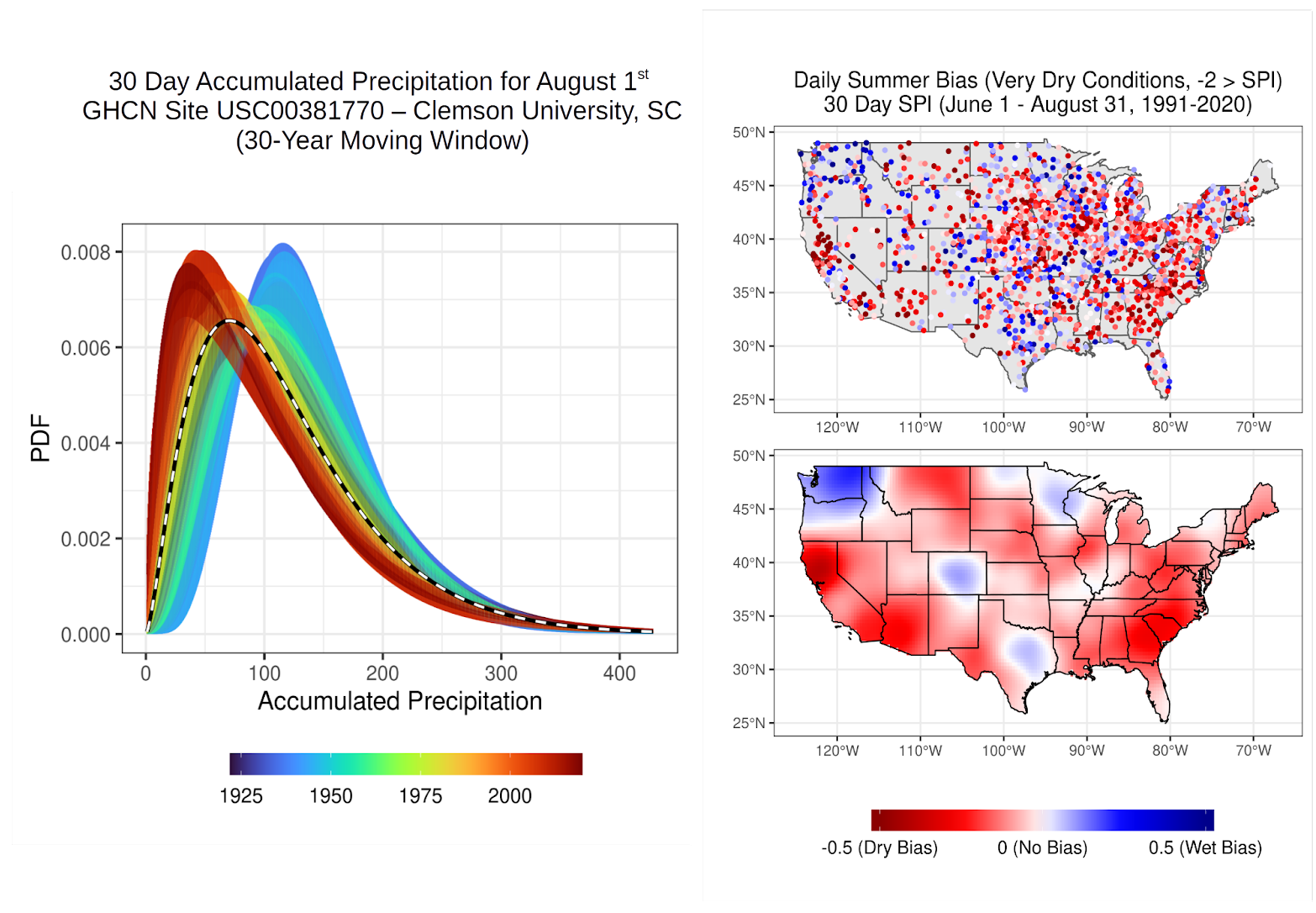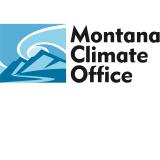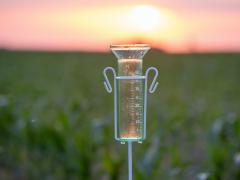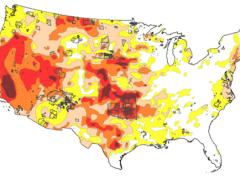Drought Assessment Has Been Outpaced by Climate Change: Empirical Arguments for a Paradigm Shift
By Zachary H. Hoylman, R. Kyle Bocinsky, and Kelsey G. Jencso, Montana Climate Office at the University of Montana.
This article summarizes the study, Drought assessment has been outpaced by climate change: empirical arguments for a paradigm shift, published in Nature Communications.
Click on this video for a short presentation on this work.
Key Findings
- Climate change shifts the baseline for what should be considered “normal” hydrological conditions, therefore shifting the definition of anomalous dryness, or “drought.”
- Generally, 30 years of data is adequate for characterizing a statistical climatology. Shorter reference periods (climatology lengths) based on more recent data are preferable when defining contemporary climatologies in regions with rapidly changing climate, such as the Southwest.
- The reference period chosen to define meteorological drought can have a substantial impact on the apparent spatial extent and duration of drought events.
- In regions where aridification is occurring (such as the southwestern United States), longer reference periods result in a dry bias, causing drought to appear more severe than if it were contextualized by more recent conditions.
- Conversely, in regions that are becoming wetter (such as the northwestern United States), longer reference periods result in a wet bias, causing drought to appear less severe than if it were contextualized by more recent conditions.
- Ultimately, the choice of reference period for defining drought (or any “normal” climatology) must depend on the adaptive capacity of the system in question (e.g., agriculture, ecosystems, economics).
- Climate change is impacting water supplies for communities and ecosystems around the world. Several regions of North America are experiencing decreases in annual rainfall, shifts in the seasonality of precipitation, and an increased frequency of extreme precipitation events. Yet, despite the acceleration of climate change, assumptions of a stationary climate are still incorporated into the management of water resources in the United States, with a preference towards 60-year (or longer) observation record lengths for drought characterization. Bias emerges by assuming that conditions from the early and mid-20th century are as likely to occur in today’s climate.
Climate change is impacting water supplies for communities and ecosystems around the world. Several regions of North America are experiencing decreases in annual rainfall, shifts in the seasonality of precipitation, and an increased frequency of extreme precipitation events. Yet, despite the acceleration of climate change, assumptions of a stationary climate are still incorporated into the management of water resources in the United States, with a preference towards 60-year (or longer) observation record lengths for drought characterization. Bias emerges by assuming that conditions from the early and mid 20th century are as likely to occur in today’s climate.
How Much Dryness is "Normal"?
A lack of rainfall can contribute to anomalously dry conditions, leading to cascading water deficits across the entire hydrological system. Therefore, rainfall deficits play a preeminent role in determining where and when drought is occurring. Drought intensity is characterized according to how much moisture is expected in a given location and/or time period. This important concept means that drought is relative and dependent on the base-line reference conditions against which today’s conditions are compared. For example, a missing inch of precipitation may be of no concern to communities on the coast where precipitation is abundant, but may have catastrophic implications for communities in more arid regions.
Are increasingly dry conditions the “new normal” in aridifying regions? In a word, yes. And as such, our definition of what constitutes abnormality needs to be updated to keep up with a changing climate. In a recent study funded in part by NOAA’s National Integrated Drought Information System (NIDIS), researchers from the Montana Climate Office evaluated the degree to which assumptions of a climate stationarity may bias drought assessment. To do this, they used computer simulation to understand how long of a climate record is needed to assess drought intensity—conventional methods suggest a minimum of 60 years of data should be used to accurately approximate drought intensity. The authors then used an analysis of observed rainfall data from ~2,000 long-term climate stations across the U.S. to examine spatial patterns of drought metric bias. Bias was calculated by evaluating the difference in drought intensity associated with a short (~30 year contemporary climate) versus long (~70+ year “period-of-record” climate) reference frame.

Right: Standardized Precipitation Index (SPI) bias for Global Historical Climatology Network (GHCN) sites across the United States during periods with SPI < −2 (very dry conditions) defined using the period-of-record SPI timeseries. Bias was computed as the median daily difference between the period-of-record SPI and the 30-year (“contemporary”) SPI from June 1 to August 31, 1991–2020.
Source: Hoylman, Z.H., Bocinsky, R.K. & Jencso, K.G. Drought assessment has been outpaced by climate change: empirical arguments for a paradigm shift. Nature Communications 13, 2715 (2022).
The study reveals that drought assessment error is relatively low with short climatology lengths, and error (with respect to the more recent climate) can increase substantially when using longer reference frames where climate is changing rapidly. This increase in error results in patterns of drought metric bias. “Hot spots” of dry bias—i.e., where the long climatology suggests conditions are drier than the shorter, 30-year climatology—were strongly apparent in the southeastern and southwestern U.S., especially during periods of meteorological drought.
The dry bias identified in this study may influence the perspective of decision makers on drought magnitude such that drought will appear more severe than contemporary conditions warrant. Contrary to this result, some locations (such as the Pacific Northwest) are trending wetter, and exhibit a strong wet bias during dry times. Drought in these regions will be reported as less severe than contemporary conditions warrant. Given observed changes in precipitation patterns due to climate change, one might expect these biases to become more pronounced in the future if long climate records continue to be used for contemporary drought assessment. Ultimately, further dialogue is needed within the drought and water resources communities on how to better characterize drought and contemporary risk in an era of rapid change, else a divergence in actual drought risk and disaster response may occur.
The study team included Zachary H. Hoylman, R. Kyle Bocinsky, and Kelsey G. Jencso of the Montana Climate Office at the University of Montana. This work was supported by NIDIS through a University Corporation for Atmospheric Research grant.







